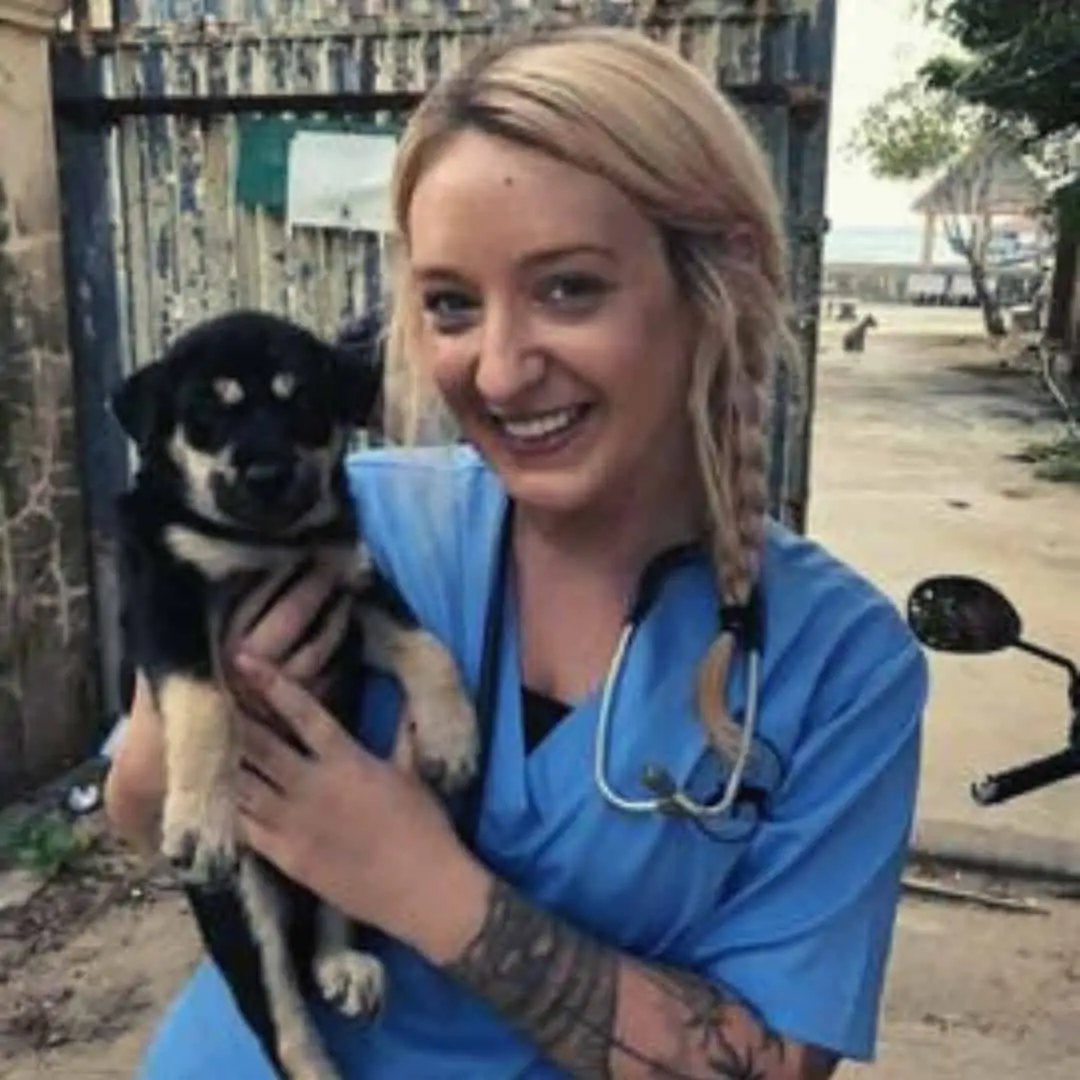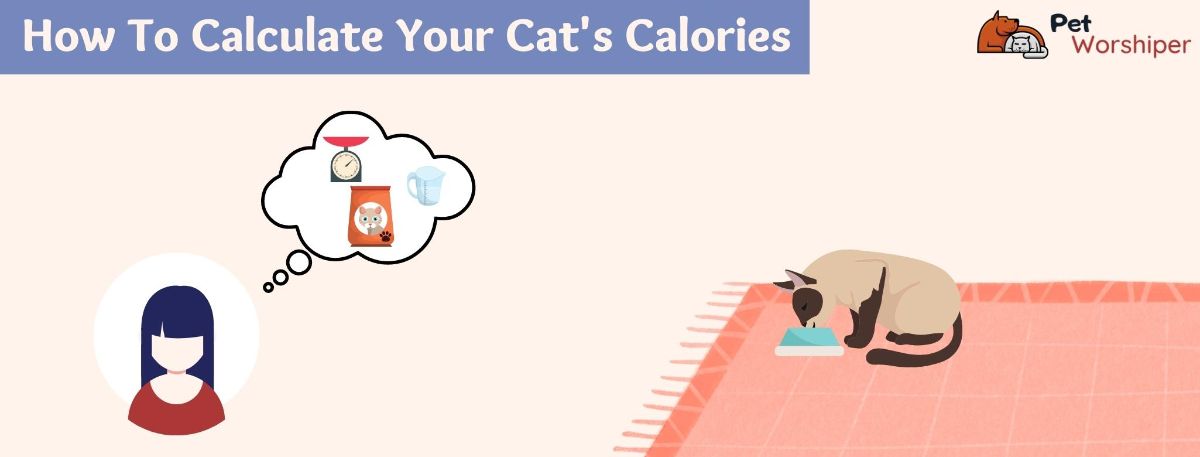
A cat’s diet plays a significant role in the management of its overall health. Many of us think the most critical question is what to feed our cats each day, but the amount we provide them has just as much importance.
Feeding your cat within their recommended serving guidelines is one of the easiest ways to set them up for a healthy and happy future.
As a vet tech, I know that a proper feeding plan can help to prevent feline obesity, behavioral complications, and even systemic disease.
To offer you the tools you need to make the best diet choices for your feline companion, I’ve created a detailed feeding guide with everything you need to know about feeding your cat.
In this guide, you can also find an online cat calorie calculator. You can check it right here.
Whether you are a new cat owner or are looking to fine-tune your cat’s diet, let’s dive into the important details below!
The Importance Of Proper Nutrition In Cats
Similar to you and me, nutrition is at the core of our cat’s health. A diet that meets your cat’s needs in their current life stage will help them thrive and help keep them healthy in the future.
Multiple diseases develop as a result of poor nutrition, ranging from feline diabetes to heart disease. Something as simple as feeding your cat the proper amount can help to prevent these complications, making education on this topic so important going forward.
What Good Cat Food Must Include
Before you assess how much you should be feeding your cat at mealtime, it’s helpful to have an idea of the main nutrients you should be looking for in their food.
While most store-bought diet options are AAFCO approved, meaning they must have the ingredients listed below, it’s still important to be aware of these factors.
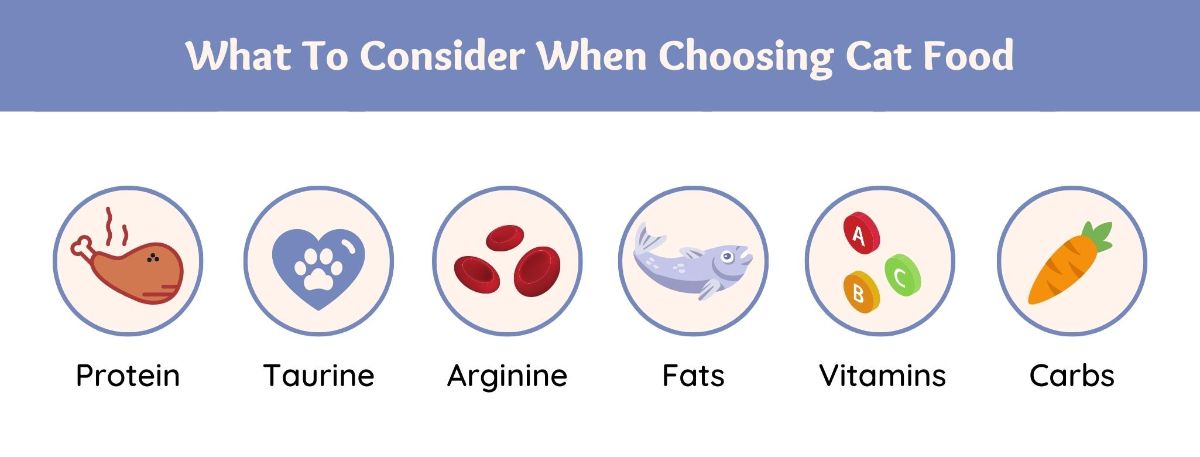
Protein: Cats are obligate carnivores, meaning they rely on protein from animal tissue to survive. Acceptable proteins include anything from poultry to fish, as long as they are sourced directly from animals.
Taurine: Taurine is an essential amino acid that is found in different forms of animal tissue. Taurine is responsible for critical roles such as maintaining heart muscle function, promoting vision health, and the development of growing kittens. Thankfully, any AAFCO option will contain the amount of Taurine your cat needs.
Arginine: Arginine is an essential amino acid that is found in virtually any protein source. Arginine is responsible for helping the body to remove waste products, preventing toxin buildup within the bloodstream. Just like taurine, all AAFCO options will contain an approved amount of this nutrient.
Fat: Fat can be just as important as carbs and protein when it comes to providing energy for the body. Not only is fat a solid energy source, but it also helps to target inflammation within the tissues. Some of the most common fat sources in cat food include omega fatty acids, flaxseed oil, and vegetable oils.
Vitamins & Minerals: Vitamins are responsible for important functions such as blood clotting and bone growth, while minerals aid in muscle function and nerve transmission. Some of the most common vitamins and minerals you should look for in your cat’s food include Vitamin A, Vitamin D, and Vitamin E.
Carbohydrates: Carbohydrates not only provide additional energy for the body, but they also aid in digestion when in the form of fiber. The most common types of carbohydrates that you will see in cat food are different forms of vegetables and fruit.
Things To Consider When Calculating How Much To Feed
Our cats have different nutritional needs based on the current life stage they are in. Not only will they require a different calorie range to consume each day, but they may benefit from certain nutrients or additives as well.
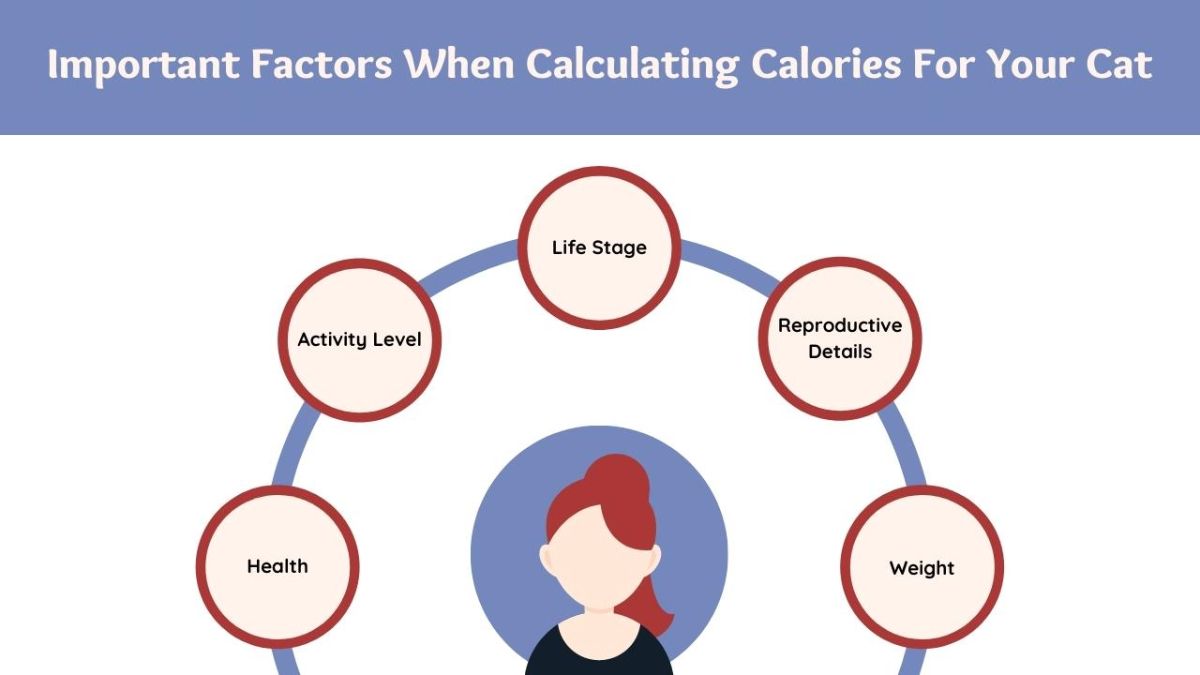
Life stage: Your cat’s life stage is often broken down into a few different categories; kitten, adult, 7+ adult, and senior. This separation is essential when determining what to feed your cat, as each age range has a suggested daily calorie intake. For example, growing kittens will need to take in up to double the number of daily calories as their adult feline friends.
Activity level: The more active your cat is, the more calories it will need to consume each day. A playful cat can quickly burn through the calories they consume, while a more sedentary cat may be just fine with the feeding amounts recommended for their age range.
Current weight: Your cat’s current weight can play a major role in how much food they need to consume each day. An underweight cat may require a sight calorie increase to help them increase in weight, while an obese cat may need to cut back.
Reproductive details: A cat’s reproductive status is essential when considering its daily feeding amounts. For example, a pregnant cat not only needs to consume more food each day, but they will also need to be switched to a diet created for mothers and kittens in the late stage of their pregnancy.
Current health: Your cat’s current health status will deeply impact their nutritional requirements. Underlying conditions may require a prescription diet, while other health complications will require a change in caloric intake. These situations will require the guidance of a veterinarian.
Feeding Guidelines For Different Ages of Cats
Your cat’s diet of choice should offer standard feeding guidelines on the label, but it’s important to have a general idea of what they require for each life stage.
To help you determine how much food your cat needs each day based on age, let’s review our cat feeding guidelines for a 24 hour period below.
Keep in mind that these are general guidelines, so you will need to consider your cat’s activity level and body condition. We also suggest speaking with your vet before switching to any specific life-stage food, including those for senior and geriatric cats.
Kitten Feeding Chart For Dry Food
| Weight in lbs | Kittens 8 weeks to 8 months |
|---|---|
| 0.75 lbs – 1lb | 90 kcal – 100 kcal |
| 1.5 lbs – 4 lbs | 120 kcal to 230 kcal |
| 4.5 lbs – 9 lbs | 240 kcal to 280 kcal |
| 9 lbs to 12 lbs | 250 kcal to 325 kcal |
Adult to Senior Feeding Chart For Dry Food
| Weight in lbs | Adults: 8 months to 7 years | Adults: 7 years to 10 years | Seniors: 10 + |
| 5 lbs | 170 kcal | 150 kcal | 130 kcal |
| 8 lbs | 250 kcal | 230 kcal | 190 kcal |
| 11 lbs | 270 kcal | 250 kcal | 200 kcal |
| 14 lbs | 330 kcal | 310 kcal | 250 kcal |
| 15- 20 lbs | 390 kcal | 370 kcal | 300 kcal |
Reference for reducing calories in senior cats: VCA
Why Measuring Your Cat’s Food Matters
There are many different feeding styles seen in homes around the world. Some people simply eyeball how much food to put in their cat’s bowl each meal, while others allow their cat to free-feed throughout the day.
Though every cat has their own routine that works for them, measuring your cat’s food is always the best way to stay on top of their overall health.
Measuring your cat’s food allows you to keep track of how much food they are consuming each day, stay on top of any appetite changes, and modify their feeding amount when needed.
If you are not measuring your cat’s food each day, these actions can be highly challenging to achieve.
Measuring your cat’s food allows you to present the most accurate information possible to your vet when needed. For example, if your cat ever needs to decrease their calorie intake, being aware of its daily feeding amount will allow for a simple transition.
Should I Follow The Label On My Cat’s Food?
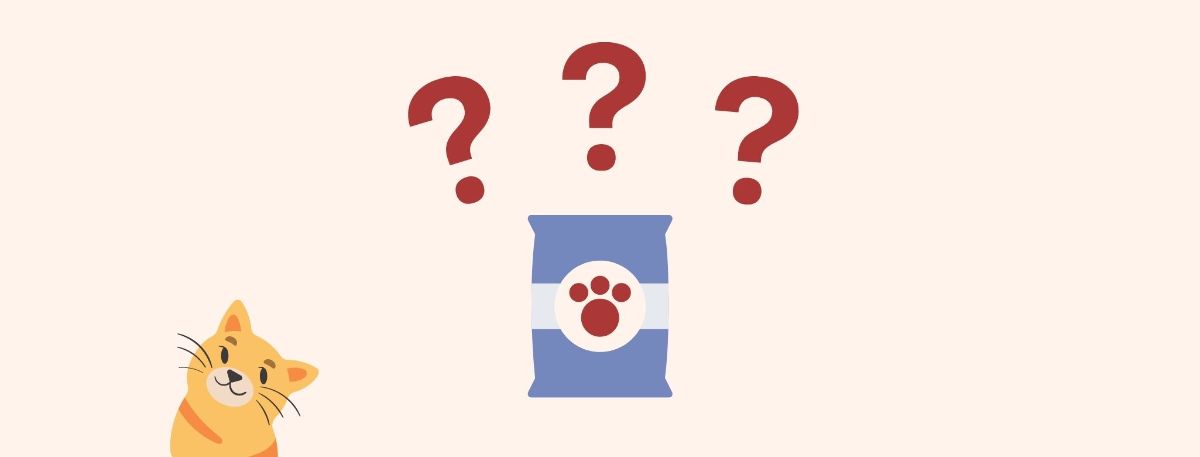
Examining your cat’s food label is an important step in calculating how much they should eat each day.
Though some pet owners simply offer the same amount of cups no matter which brand they use, we always suggest examining the kcals present in your cat’s food.
You do not have to follow the feeding suggestion on the label at all times, but we highly suggest calculating your cat’s food amount by using the kcals listed per serving.
Diets can vary greatly when discussing calories, so it’s always best to know exactly what is in each cup of food you are scooping.
The label on your cat’s food also offers a general guideline in standard feeding amounts, so you can always follow their direction when in doubt.
How To Calculate The Calories Your Cat Needs Each Day
If you would like to be aware of your cat’s specific caloric needs, you can always calculate their recommended feeding amount based on their weight range.
Though most diets offer feeding directions on their label, it is always beneficial to know how to calculate these amounts yourself!
There is a great formula for this:
[Your cat’s weight (kgs) x 30 + 70] x DER multiplier
To help you better understand this process, let’s walk you through the calculation step by step.
First, you will need to determine your cat’s weight in kilograms. I will use a 10-pound cat as an example, so the weight is kilograms is 4.5kg. I determined this by dividing their weight in pounds by 2.2. Next, you will determine your cat’s resting energy requirement (RER) using the calculation below.
30 x (4.5) + 70 = 205, so the RER for a 10 pound cat is 205 kcal per day.
Next, you will need to determine your cat’s daily energy requirement (DER). The average DER based on life stage has been determined by experts. Here is a list of the standard DER multipliers below.
- Kitten DER: 2.5xRER
- Kitten 4 months to 1-year DER: 2xRER
- Healthy Adult DER: 1.2xRER
- Neutered Adult DER: 1.2xRER
- Intact Adult DER: 1.4xRER
- Overweight or inactive Adult DER: 1.0xRER
For our example, we will be using the DER for a healthy adult cat.
Now, you will multiply your cat’s RER by their recommended DER. By using our example, we would need multiple 205 kcal x 1.2. Our result would be 246 kcal per day. So by using this calculation, our 10-pound cat should receive 246 kcalories per day.
The calculation is provided by DVM 360.
However, I want to make your job easier instead of the constant math tasks. You can easily calculate the calories your feline friend needs with the following online cat calorie calculator:
Should I Feed My Cat Wet or Dry Food?
Feeding your cat wet or dry food is entirely up to you and your veterinarian’s discretion. Some cats will do just fine on a dry food diet for their entire lives, while others will benefit from the added moisture that wet food offers.
Many cat owners choose to offer a combination of wet and dry food each day, which is a great option as long as these amounts are within their daily recommended caloric range. As long as you are still meeting your cat’s nutritional requirements, the decision of offering wet or dry food is up to you.
It is important to note that some cats benefit from consuming wet food each day. These cats include those with chronic urinary tract disease, kidney disease, constipation, dehydration, and hyperthyroidism. Just make sure that your wet food of choice is approved by your veterinarian.
How Often Should I Feed My Cat?
Once you determine how many calories your cat should be eating each day, you will need to determine how many times you should feed them. The recommended feeding schedule will vary based on your cat’s age and energy requirements, as well as your availability to offer them meals at these times.

The standard feeding schedules based on your cat’s age are as follows:
Kittens 5-8 weeks: 4-5 meals a day
Kittens 8 weeks to 4 months: 3-4 meals a day
Kittens 4-8 months: 3 meals a day
Adults 8 months to 7 years: 2-3 meals a day
Adults 7 to 10 years: 2-3 meals a day
Senior & geriatric: 2-3 meals a day
Remember that no matter how many times you feed your cat, you will still need to follow their daily calorie requirements. For example, if you feed your cat three times a day, you will need to divide their calorie amount by 3 to determine the amount of food per meal.
Monitoring Your Cat’s Eating Habits & When To Make Changes
Monitoring your cat’s eating habits is key in staying on top of their general wellbeing going forward. One of the first things to change when a cat is unwell is its appetite, so being aware of its standard eating behavior is a beautiful tool in keeping your cat happy and healthy.
Monitoring your cat’s eating habits can also allow you to make changes when needed. For example, if your cat seems to shy away from their food bowl when the company is over, you may need to consider moving their feeding station to a more secluded area in your home.
Some of the best ways to assess your cat’s eating habits are by:
- Invest in a microchip feeder: A microchip cat feeder is key if you have multiple cats in your home. Cats are known to steal their housemates’ food at any given opportunity, but a microchip feeder can prevent this entirely. Microchip feeders will only open to reveal their food when the cat with the registered microchip approaches the bowl. If any other cat attempts to steal the food, the food will remain covered.
- Using timed feeders: We can’t always be home for each meal, but maintaining a feeding schedule is important to our feline friends. A timed feeder can be programmed to not only dispense food at certain times each day, but it will dispense the exact serving size your cat needs for each meal.
- Assess the time your cat visits their bowl: Having an idea of when your cat typically visits their food bowl can be helpful in determining the best feeding time, as well as tipping you off to any decline in appetite.
- Monitoring how much they eat: When possible, it’s best to take a quick glance at your cat’s food bowl after feeding time to make sure they ate their standard amount. If it seems like their appetite has decreased at any point, this can allow you to contact your veterinarian.
- Take note of when they avoid their food bowl: If you notice that your cat avoids their daily feedings when company is over, you may need to move their feeding station to a more secluded area in your house. If nothing stops your cat from eating their food, then this may not be something you need to worry about.
Tips For Putting Your Cat On A Diet
If you ever think your cat may need to lose a few pounds, we always suggest reaching out to your veterinarian for further guidance. Crash diets do not work in our feline friends, and any abrupt diet changes can harm their overall health.
Weight gain can also result from an underlying illness, so we never suggest cutting back on your cat’s daily caloric intake until you get permission from your vet. Your veterinarian can assess their current diet and food intake, allowing them to come up with the safest diet plan moving forward.
Final Thoughts
As you can see, quite a bit of thought should go into your cat’s diet planning. By following the guidelines we discussed above, you can determine the best feeding plan for your feline friend going forward!
References:
- https://www.vet.cornell.edu/departments-centers-and-institutes/cornell-feline-health-center/health-information/feline-health-topics/how-often-should-you-feed-your-cat
- https://www.dvm360.com/view/calculate-perfect-portions-pets
- https://vcahospitals.com/know-your-pet/feeding-mature-senior-and-geriatric-cats

